My
List |
Addition Date
|
Target
|
Mission
|
Instrument
|
Size
|

|
2011-04-04 |
|
Spitzer Space Telescope
|
IRAC
Visible Light
|
2829x1401x3 |

|
-
PIA13929:
-
Undercover Jet Exposed
Full Resolution:
TIFF
(11.89 MB)
JPEG
(182.4 kB)
|

|
2011-01-26 |
Jupiter
|
IRTF
|
Visible Light Camera
Gemini North Telescope
Hubble Space Telescope
VLT
|
1202x1200x3 |
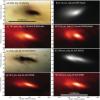
|
-
PIA13762:
-
Eight Looks at the Jupiter Impact
Full Resolution:
TIFF
(4.332 MB)
JPEG
(138.1 kB)
|

|
2009-02-10 |
Messier 101
|
Hubble Space Telescope
Spitzer Space Telescope
|
Chandra X-ray Telescope
IRAC
Visible Light
|
7200x7200x3 |

|
-
PIA11797:
-
NASA's Great Observatories Celebrate the International Year of Astronomy
Full Resolution:
TIFF
(155.5 MB)
JPEG
(6.529 MB)
|

|
2008-01-25 |
Jupiter
|
Hubble Space Telescope
|
Visible Light
|
2000x2682x3 |

|
-
PIA10224:
-
Jupiter Eruptions
Full Resolution:
TIFF
(16.11 MB)
JPEG
(290.4 kB)
|

|
2007-06-01 |
Messier 81
|
Galaxy Evolution Explorer (GALEX)
Hubble Space Telescope
Spitzer Space Telescope
|
GALEX Telescope
Infrared Array Camera (IRAC)
Visible Light
|
3180x2456x3 |
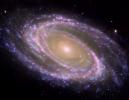
|
-
PIA09579:
-
M81 Galaxy is Pretty in Pink
Full Resolution:
TIFF
(23.43 MB)
JPEG
(1.061 MB)
|

|
2007-05-01 |
|
Spitzer Space Telescope
|
IRAC
Visible Light
|
2838x948x3 |
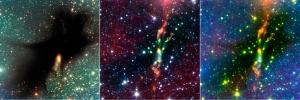
|
-
PIA09338:
-
Spitzer Digs Up Hidden Stars
Full Resolution:
TIFF
(8.071 MB)
JPEG
(398.7 kB)
|

|
2006-07-21 |
|
Hubble Space Telescope
Spitzer Space Telescope
|
IRAC
Visible Light
|
900x360x3 |
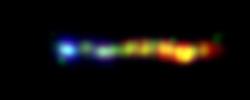
|
-
PIA08617:
-
Black Hole Spills Kaleidoscope of Color
Full Resolution:
TIFF
(973.2 kB)
JPEG
(10.56 kB)
|

|
2006-05-11 |
|
Spitzer Space Telescope
|
IRAC
MIPS
Visible Light
|
900x859x3 |
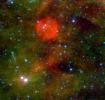
|
-
PIA08453:
-
The (Almost) Invisible Aftermath of a Massive Star's Death
Full Resolution:
TIFF
(2.322 MB)
JPEG
(104 kB)
|

|
2006-04-26 |
|
Hubble Space Telescope
Spitzer Space Telescope
|
IRAC
Visible Light
|
2905x1486x3 |
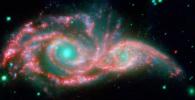
|
-
PIA08097:
-
Eyes in the Sky
Full Resolution:
TIFF
(12.95 MB)
JPEG
(560.3 kB)
|

|
2006-04-24 |
M82 Galaxy
|
Hubble Space Telescope
Spitzer Space Telescope
|
Chandra X-ray Telescope
Infrared Array Camera (IRAC)
Visible Light
|
640x480x3 |

|
-
PIA08093:
-
Great Observatories Present Rainbow of a Galaxy

Full Resolution:
TIFF
(45.01 MB)
JPEG
(799.8 kB)
|

|
2006-01-11 |
Cartwheel Galaxy
|
Galaxy Evolution Explorer (GALEX)
Hubble Space Telescope
Spitzer Space Telescope
|
Chandra X-ray Telescope
GALEX Telescope
Infrared Array Camera (IRAC)
Visible Light
|
1500x1500x3 |
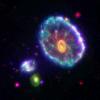
|
-
PIA03296:
-
A Stellar Ripple
Full Resolution:
TIFF
(6.762 MB)
JPEG
(201.2 kB)
|

|
2005-09-27 |
HUDF-JD2
|
Hubble Space Telescope
Spitzer Space Telescope
|
IRAC
Visible Light
|
2699x1838x3 |
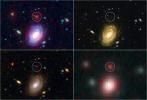
|
-
PIA03542:
-
Big Galaxy in Baby Universe
Full Resolution:
TIFF
(14.9 MB)
JPEG
(647.4 kB)
|

|
2005-06-10 |
Cassiopeia A
|
Hubble Space Telescope
Spitzer Space Telescope
|
IRAC
Visible Light
Chandra X-ray Telescope
|
1835x1348x3 |

|
-
PIA03519:
-
Cassiopeia A: Death Becomes Her

Full Resolution:
TIFF
(7.432 MB)
JPEG
(263.6 kB)
|

|
2005-05-05 |
|
Hubble Space Telescope
|
Visible Light
|
3000x1681x3 |
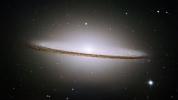
|
-
PIA15226:
-
Hubble Spies Spectacular Sombrero
Full Resolution:
TIFF
(15.13 MB)
JPEG
(427.2 kB)
|

|
2005-05-04 |
Messier 104
|
Hubble Space Telescope
Spitzer Space Telescope
|
IRAC
Visible Light
|
3000x1681x3 |
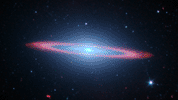
|
-
PIA07899:
-
Spitzer Spies Spectacular Sombrero

Full Resolution:
TIFF
(15.13 MB)
JPEG
(214.2 kB)
|

|
2003-06-20 |
|
Terrestrial Planet Finder
|
Infrared Coronagraph
Infrared Interferometer
Visible Light Coronagraph
|
2736x1836x3 |
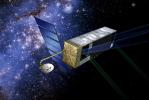
|
-
PIA04499:
-
Proposed Missions - Terrestrial Planet Finder
Full Resolution:
TIFF
(15.07 MB)
JPEG
(636.1 kB)
|

 Planetary Data System
Planetary Data System




























